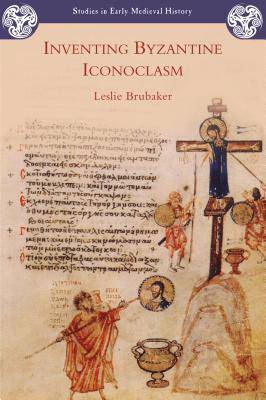
Je cadeautjes zeker op tijd in huis hebben voor de feestdagen? Kom langs in onze winkels en vind het perfecte geschenk!
- Afhalen na 1 uur in een winkel met voorraad
- Gratis thuislevering in België vanaf € 30
- Ruim aanbod met 7 miljoen producten
Je cadeautjes zeker op tijd in huis hebben voor de feestdagen? Kom langs in onze winkels en vind het perfecte geschenk!
- Afhalen na 1 uur in een winkel met voorraad
- Gratis thuislevering in België vanaf € 30
- Ruim aanbod met 7 miljoen producten
Zoeken
Omschrijving
Byzantine 'iconoclasm' is famous and has influenced iconoclast movements from the English Reformation and French Revolution to Taliban, but it has also been woefully misunderstood: this book shows how and why the debate about images was more complicated, and more interesting, than it has been presented in the past. It explores how icons came to be so important, who opposed them, and how the debate about images played itself out over the years between c. 680 and 850. Many widely accepted assumptions about 'iconoclasm' +" that it was an imperial initiative that resulted in widespread destruction of images, that the major promoters of icon veneration were monks, and that the era was one of cultural stagnation +" are shown to be incorrect. Instead, the years of the image debates saw technological advances and intellectual shifts that, coupled with a growing economy, concluded with the emergence of medieval Byzantium as a strong and stable empire.
Specificaties
Betrokkenen
- Auteur(s):
- Uitgeverij:
Inhoud
- Aantal bladzijden:
- 160
- Taal:
- Engels
- Reeks:
Eigenschappen
- Productcode (EAN):
- 9781853997501
- Verschijningsdatum:
- 15/05/2012
- Uitvoering:
- Paperback
- Formaat:
- Trade paperback (VS)
- Afmetingen:
- 155 mm x 231 mm
- Gewicht:
- 226 g

Alleen bij Standaard Boekhandel
+ 96 punten op je klantenkaart van Standaard Boekhandel
Beoordelingen
We publiceren alleen reviews die voldoen aan de voorwaarden voor reviews. Bekijk onze voorwaarden voor reviews.









